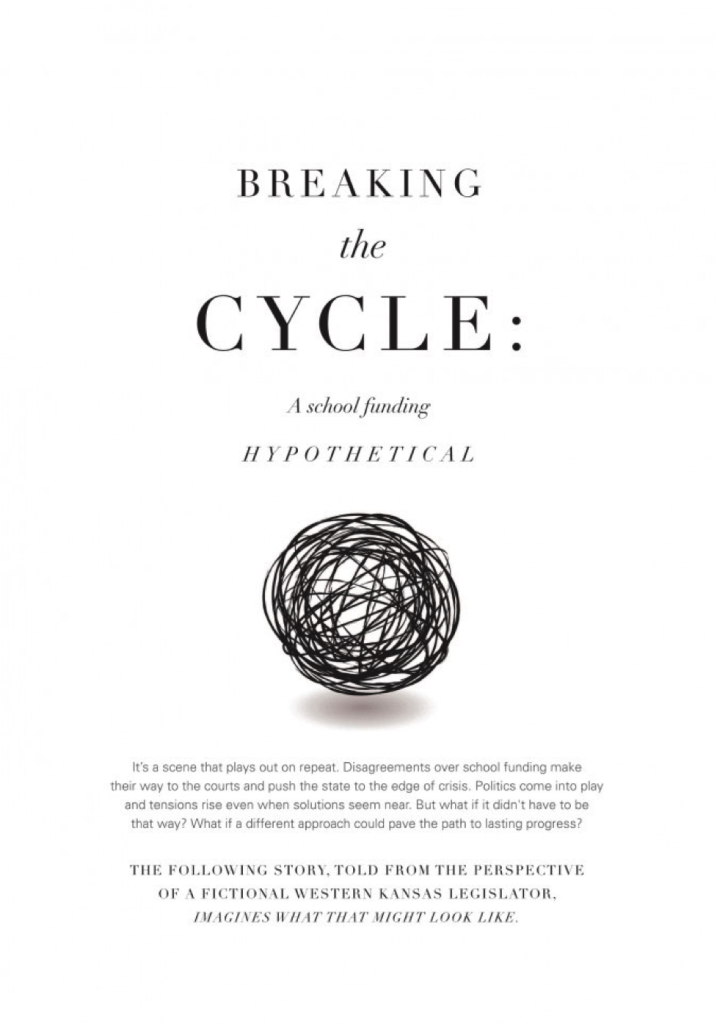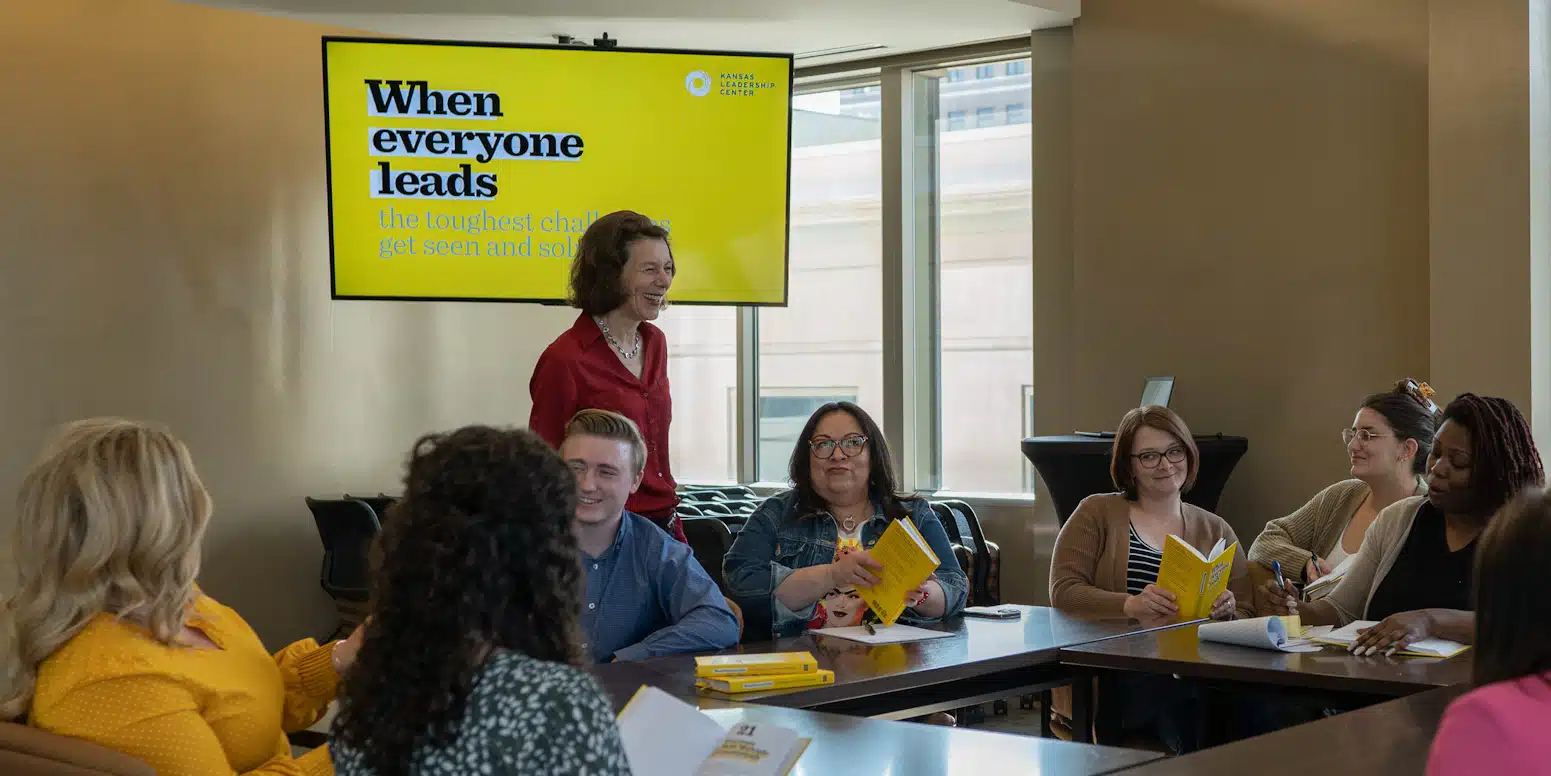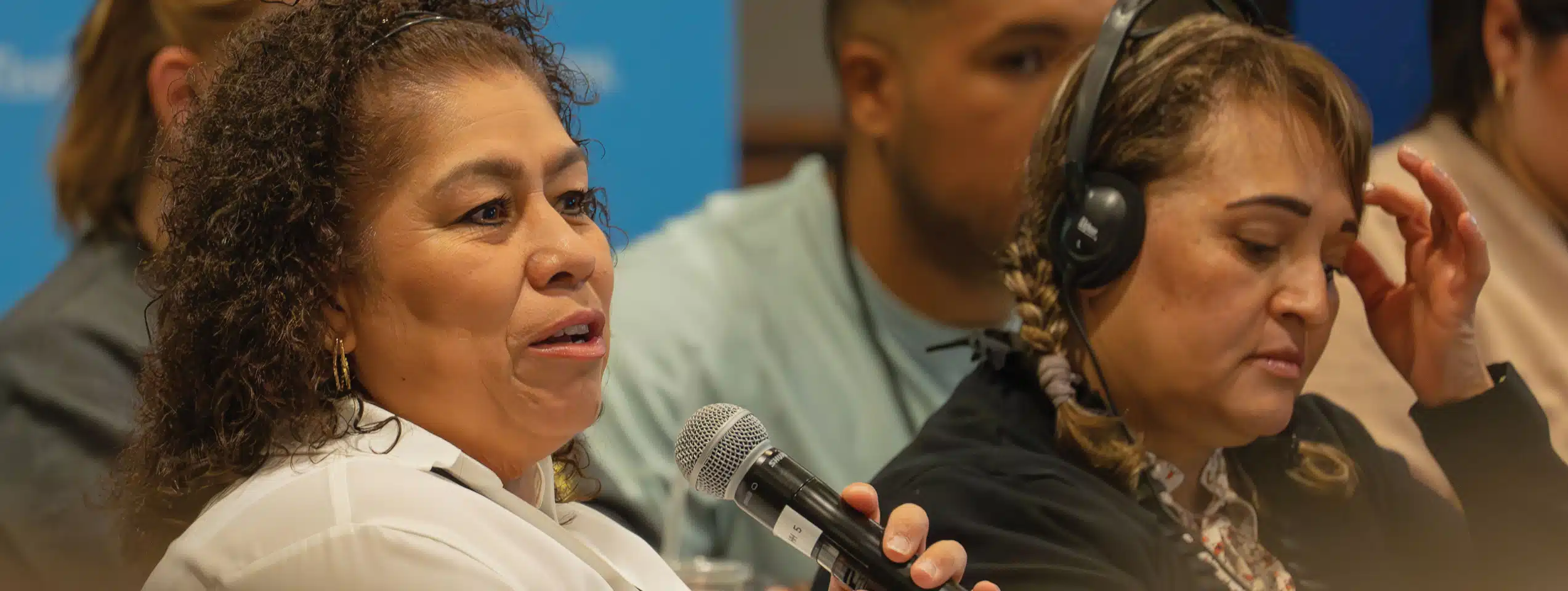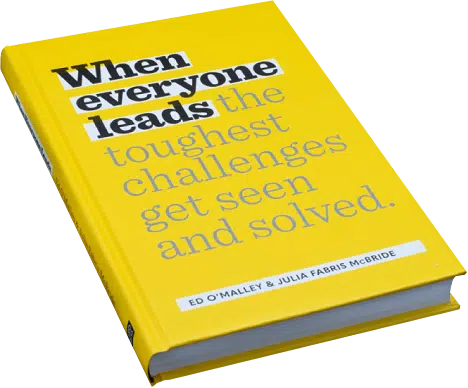
Part 1
“Shut the doors. Switch off your phones,” the governor says intently. “Nobody gets in or out of here for a while.”
As he pauses, a hush creeps over the 50 people packed into the main room of a community building in a Flint Hills town on a warm Saturday in May. Looking around, I see nearly every faction with a stake in the state’s perpetual tug-of-war over public school funding. I rub my eyes and blink twice, not quite sure I believe what I’m seeing.
“I know this must feel strange to many of you,” the governor continues. “It’s not entirely comfortable for me either. But I feel like there’s a window of opportunity here. And if we don’t take it, we’ll just start heading back down the same road we’ve been on for years.”
I exchange perplexed glances with a few members of my caucus, the Republicans in the Kansas House of Representatives. The Senate Republicans sit a few rows back from us. I spy a few Democrats from both chambers looking dubious. The patchwork of roles and ideologies watching anxiously includes school superintendents, board members, free market activists, the CEO of a large corporation, teachers’ union representatives and a few “average” citizens. The governor sports his casual look of blue jeans, boots and a plaid shirt.
As I scan the room, that Bill Murray line from “Ghostbusters” — “Dogs and cats, living together!” — pops in my head and I chuckle aloud. Kaye Williams, a Democratic rep from Kansas City who has been a partisan sparring partner of mine since our days together at Washburn Law, gives me “the look” from the end of the row.
I shift in my chair and think about how it wasn’t that long ago that the state seemed on the verge of a constitutional crisis. Long before I showed up, the Legislature pumped a bunch of money into schools to resolve a lawsuit filed by some of the state’s school districts. Then, aid to schools got cut back significantly because of the recession. Instead of restoring funds to their high-water mark, a new governor and the Legislature enacted big tax cuts intended to grow our economy. In between, the school folks sued the state, yet again, saying that we hadn’t lived up to our constitutional duty to fund education.
I, like many of my friends in the Legislature, was ready for a fight this time around if the black-robed justices on the Kansas Supreme Court ruled against us. But the court told us we just had to fix a few things by July to make school funding equitable. Rather than ordering us to pay a king’s ransom to adequately fund schools, they sent that part of the case back to a three-judge panel for additional review. Who really knows how long that will take?
I expected us to make some tweaks in the Legislature to help poor schools and be done with it. Which we tried to do. But we also made some changes dealing with the dismissal of teachers and corporate tax breaks for private school scholarships that upset some folks. Tempers have cooled a bit, but there’s an air of bitterness and resentment that hangs over the room and some parts of the state like a western Kansas dust storm.
I thought things on the school-funding front would be quiet for a while. But then the governor came out saying that he wanted to take “one giant swing” at getting past the state’s decades-long cycle of school-funding lawsuits — by calling for a retreat on the issue involving all of the factions, outside of Topeka, no less.
Now I sit in this room as the governor takes questions, looking at nearly as many foes as friends. This combustible mix is a result of the governor’s decision to work with school finance advocates to whittle the factions involved down to a workable number of delegates. Not everybody’s here – a few of the people who felt the strongest about the issue refused to attend. And by the demeanor of some around the room, I’m guessing a few more might bolt before the day is out, even if they have to climb out the windows.
“These lawsuits have been going on since I was in law school, and they don’t settle anything for very long,” the governor says. “A few months ago, I called for a truly open process to work at breaking this cycle of perpetual litigation. I believe the people assembled in the room — a group representing a full spectrum of views and ideologies in this state — can make this happen.”
The room remains silent, as if in disbelief. “Why on earth would we do that?” I think to myself. “Shouldn’t we just sort this out among conservative Republicans in the Legislature? After all, the voters picked us to make the decisions.”
“I know this is an unusual step,” the governor says, as if he’s reading my mind. “But if you look at the history of this issue, it makes you wonder if there’s any one party or group who can solve it in the long run. It’s vexed my predecessors, Democrat and Republican alike, for decades. I want to see if there’s some chance that we can work together for the common good. Or least begin building the relationships that might make it possible someday.”
The governor exhales deeply and takes in the room.
“I’m pretty convinced that I am right about this issue right now. The people around me tell me I’m right, too. I’m sure your own people tell you the exact same thing. But when I check out my approval rating or read the newspaper editorial pages, I’m reminded that a lot of people don’t agree with me — or even particularly like what we’re doing. I want to dig a little deeper into what that’s all about, and if there’s something I can do about it. Maybe there’s not. But I think we can all benefit from taking a big enough step back to see ourselves and this issue through other people’s eyes.”
The governor goes on to reiterate that he’s invested a lot of effort and political capital in cutting taxes, in hope of creating the business climate he wants to see in this state. But he won’t be in power forever, and he’s seen far too many governors watch their legacies get erased by changes in circumstance and time.
“If I – if any of us – want Kansas to truly grow and prosper, then we have to find a proper, long-term solution to end these school-funding controversies,” he says.
People across Kansas are in the process of developing a water plan that looks decades into the future, he says. But school finance doesn’t feel like quite so cross-cutting an issue. That’s probably because about half of all the spending the state has control over goes to K-12 education, he continues. The sector plays a huge role in shaping our communities, the size and scope of government in Kansas and how our economy will perform now and future. It’s inevitable that Democrats and Republicans – whether they’re liberals, moderates and conservatives – are going to disagree strongly over how to deal with it.
“But what if we could disagree a little less? Or least agree enough to break this insane cycle we’re in,” he says. “It may be unlikely, but I think it’s possible. I don’t believe that there’s anybody in the room who wakes up in the morning intent on mucking up Kansas. There must be a way we can fund our schools adequately, equitably and wisely.”
When the governor’s done talking, the group disperses for a short coffee break. I find myself standing next to Kaye.
“Hey, there, you look like you’d rather be at the dentist’s office. Not enjoying our retreat so much?” she teases.
I laugh and tell her that the people from my western Kansas district didn’t send me to Topeka for fun and games. They want me to fix things and put the state back on a path to prosperity. They’re tired of high taxes and government overspending, and they just want more jobs to come to our towns, which are struggling to survive. I agree with them on those things. “Stick to your guns,” they say. “I intend to,” I frequently reply. “I’m not going to compromise what I believe in.”
Anyway, the two of us get around to talking about how we both ended up here. It’s the first time we’ve really chatted since the most recent legislative blowup, in which we stood, yet again, in opposite camps.
Kaye says she was invited to help reflect the Democrat view and because she’s long been a negotiator for a teachers’ union. Because I served two terms on my local school board, I reflect the House GOP’s freshman caucus, which is bigger than usual. I tell Kaye, though, that I am not sure, though, what exactly I have to offer in a room full of high-powered politicians, activists, experts and lobbyists.
“Well, at least that’s one thing we agree on, that you are not worthy,” says Kaye, jabbing me in the shoulder.
But then we turn serious and wonder together what the real story behind this event is.
“Maybe the governor’s serious about working this out, instead of just blowing smoke like he usually does,” Kaye says. “It’ll take a ton of work to convince me he’s really shifting gears.”
“I think he’s trying,” I assure her. “But when I look around the room, all I see is a whole bunch of people who are trying to annihilate us in the next election.”
“Annihilate you?” she gasps. “I think you might want to take another look at the endangered species list, buddy. Because you’re the ones who’ve been coming after us.”
My blood pressure still up a bit, I trudge back to my chair. I hear snippets of conversation from around the room that tell me others are just as skeptical as Kaye and me. An editorial writer from one of the state’s biggest newspapers tells a school superintendent he thinks the governor is simply “grandstanding.” The superintendent wonders why anybody should even bother with the summit since the issue is moving back to the courts anyway.
The voices of my constituents from a recent public forum I held back home echo in my head. They don’t want their income taxes to go back up. They wonder about some of the choices schools make in how they spend their dollars and where exactly all the money goes.
But it’s also the things that I didn’t expect to hear that night at the public forum that spin around in my head. The concerns about larger class sizes. The wealthier districts getting the best teachers with higher salaries. The feeling that people have of being nickel-and-dimed for school supplies and fees in ways they never did with their older kids. The steady creep of local taxes even as the state’s tax bills get smaller.
“How on earth do you reconcile those competing things?” I ask them. “Dunno,” one man says to me, “isn’t that your job?” Others suggest talking it out. “If you look for ways to trim the budget first, then maybe we’d be willing to dig a bit more into our pockets,” one woman says. “Just don’t screw things up worse,” another urges me, sparking a cascade of applause.
I squirm a bit in my chair while recollecting their comments. In fact, a whole bunch of us here seem uneasy. Because we don’t see much chance of gaining anything today but do see a big fat chance of losing something, whether it’s credibility with voters or just a fine spring weekend with our families.
End of Part 1. Stay tuned for Parts 2 and 3.
Editor’s note: This description of a hypothetical process to resolve the Kansas school funding dispute is based on interviews with experts experienced in leadership, civic collaboration, public engagement and conflict resolution. It is informed by the techniques of fiction writing and the concept of transformative scenario planning, as described by writer Adam Kahane in a 2012 book on the subject.


